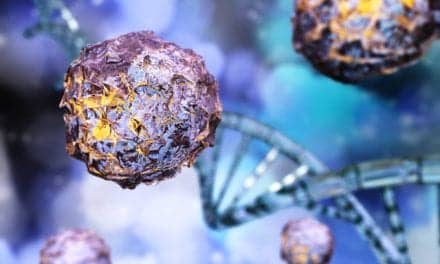Respiratory care can play a significant role in the diagnosis, initial care, and follow-up care of victims of bioterrorism attacks. The opportunities for expansion of the scope of respiratory practice are legion.
In 1984, the first documented bioterrorist attack in the United States occurred. Members of the Rajneeshee (Osho) movement contaminated 10 salad bars in Wasco County, Oregon, with Salmonella organisms, apparently in an attempt to incapacitate voters and thus influence the outcome of a local election. More than 750 people became ill, but there were no fatalities.1 In 2001, a series of unsolved anthrax attacks occurred from Florida to Connecticut, resulting in 11 cases of illness and five deaths. This was the second documented bioterror attack in the United States.
These attacks propelled the civilian medical community into the arcane world of bioweapons. Given the potential for massive numbers of victims and panic among both lay and medical personnel, it is vital that those at the forward edge of medical response have knowledge of this phenomenon. Possible bioterror indicators include a disease that either is unusual or does not occur naturally in a given area, multiple disease entities in the same patients, large numbers of casualties inhabiting the same area, a massive point-source outbreak, an apparently aerosol route of infection, sentinel dead animals, and the absence of a natural vector in the area.2 The pathogens most likely to be used are the agents causing smallpox, anthrax, plague, tularemia, botulism, mycotoxicosis, and viral hemorrhagic fevers.3 History, however, has shown that even Salmonella organisms, Brucella organisms, and other pathogens have been made into weapons.4
Anthrax
Anthrax, caused by Bacillus anthracis, has been a medical problem for recorded history. It is primarily a cutaneous disease and occasionally a gastrointestinal disease, but inhalational anthrax is extremely rare. In its inhalational form, anthrax presents much like influenza or pneumonia. Diagnosis is accomplished using laboratory tests and by exclusion. Chest radiograph abnormalities, such as a widened mediastinum, paratracheal fullness, and pleural effusions or infiltrates, are highly indicative of inhalational anthrax, although early in the disease this may be subtle.5 Until 2001, surviving inhalation anthrax after symptoms appeared was virtually unknown. Symptoms of fever, chills, drenching sweats, profound fatigue, chest discomfort, and nausea or vomiting were common in the 2001 victims. Rhinorrhea and productive cough were uncommon findings. With routine supportive respiratory care and innovative triple chemotherapy (ciprofloxacin or doxycycline; rifampin; and clindamycin, azithromycin, or vancomycin), over 54.5% recovered. The expected survival rate had been predicted at less than 15%.6
Smallpox
Smallpox, caused by the variola virus, was declared eradicated by the World Health Organization in 1980. Vaccination programs were then terminated, so there is an ever-increasing susceptible population. Highly contagious (yet not quite as contagious as its viral cousin chickenpox), this disease calls for standard respiratory precautions. The Soviet Union created a weapon form of smallpox and continued to work with it until at least 1990.7 Smallpox is spread through droplet nuclei, with devastating effects. These facts created real concern in the military medical community.8 Vaccination is the only effective treatment, and all other standard treatments are supportive. The smallpox vaccine (vaccinia virus) can be administered after exposure, preferably within 7 days. Antiviral agents, including ribavirin and cidofovir, could be employed as aerosol therapy for smallpox. Aerosolized cidofovir, delivered via small-particle nebulizer in doses of merely 0.5 to 5 mg per kg of body weight, was more effective against smallpox, cowpox, camelpox, and monkeypox than larger aerosolized doses or even subcutaneous injection.9,10 Therefore, RTs may be asked to manage smallpox victims using aerosolized cidofovir treatments for victims who cannot take the vaccine (pregnant, immunocompromised, HIV positive, or those with eczema, etc) or as a second line of postexposure prophylaxis.
Plague
The bubonic plague gained new attention in November 2002, when two tourists from New Mexico became ill in New York City. News media covered this story extensively.11 Bubonic plague causes classic lesions (buboes), usually appearing in the lymph nodes of the inguinal area (because the flea vector typically bites the ankles). Although many consider it a disease of only historical interest, the plague still occurs in the United States and elsewhere. With three clinical presentations (bubonic, primary septicemic, and pneumonic), the gram-negative bacillus Yersinia pestis can be identified through laboratory smears of peripheral blood or lymph-node needle aspirate. Effective therapies for the bubonic manifestation of the plague include streptomycin, gentamycin, tetracycline, and chloramphenicol. It is the plague in its pneumonic manifestation that is the concern of all medical professionals. In the preantibiotic outbreak of pneumonic plague in Manchuria during 1921, “the expected life of the victim was a mere 1.8 days.”12 This pathogen, as a weapon, is contagious and requires respiratory precautions. Even patients affected by its bubonic form may require mechanical ventilation, as in the New York City case. When it is properly identified via gram staining and polymerase chain reaction (PCR) and immunohistochemical assay (IHCA), plague is treated with streptomycin, but misdiagnosis could be fatal. During the past 50 years, four of the seven (57%) victims of the naturally occurring pneumonic plague in the United States died.13
Tularemia
First described in 1911 in Tulare County, California, tularemia (caused by Francisella tularensis) takes two forms in humans: ulceroglandular and typhoidal. Approximately 80% of typhoidal tularemia develops into pneumonia. Although noncontagious, tularemia is a bioweapon that causes lesions on the skin and mucous membranes accompanied by fever in 85% of cases, chills in 45%, cough in 38%, and myalgias in 31%.14 Easily identified through serology, sputum culture and sensitivity (susceptibility), and PCR and IHCA, tularemia is treated with gentamycin and streptomycin.13 Bronchopleural fistulae and calcifications can complicate care; airway care and mechanical ventilation will require anticipation of these problems. Restrictive defects and air leaks require careful bedside monitoring.
Botulism
Human vanity has brought the toxin produced by Clostridium botulinum toxin into the cosmetic arena. It is licensed for the treatment of strabismus, blepharospasm, and cervical torticollis.15 This may, unfortunately, increase the availability of this agent to a potential terrorist. Botulinum toxin poisoning can result in a presentation similar to that of Guillain-Barré syndrome, with one important difference: it is a rapidly descending paralysis leading to respiratory failure. It could be confused with myasthenia gravis, tick-borne paralysis, or even nerve-agent paralysis, but miotic pupils and copious respiratory secretions accompany nerve-agent paralysis, while in botulinum intoxication there is a decrease in secretions. The classic triad of botulinum intoxication consists of symmetrical, descending paralysis with bulbar palsies appearing as the four Ds (diplopia, dysarthria, dysphonia, and dysphagia), absence of fever, and a clear sensorium.15 Therefore, airway control is a priority, but is not complicated by bronchorrhea. Mechanical ventilation of these patients can be expected for extended periods. Correct diagnosis is vital. Using serology, toxin assays, and anaerobic cultures, botulism can be identified and readily treated with pentavalent botulinum toxoid; an FDA-approved form is available. Standard universal precautions will suffice, as secondary aerosols from patients are not considered hazardous. Botulinum toxin is inactivated by sunlight within 3 hours, and decontamination with soap and water is effective because the pathogen is not dermally active. An aerosol attack is the most likely scenario involving botulinum; however, it could be used to attack food, as well.
Other Pathogens
The Soviet Union7 and the Aum Shinrikyo movement16 both worked to develop Venezuelan equine encephalitis (VEE) and various hemorrhagic-fever viruses into weapons. With VEE, the victim presents with a general malaise, a labile fever, rigors, headache, and photophobia. Treatment is supportive, with standard universal precautions considered sufficient. Viral hemorrhagic fever is far more dangerous, with respiratory precautions upgraded to airborne isolation and decontamination with hypochlorite and phenolic disinfectants. Ribavirin has been demonstrated to be effective in treating the Hantaan virus.17 The principles of hemodynamic, respiratory, neurological, and hematological support apply.
Intravenous ribavirin is also effective against Lassa fever (with the side effect of anemia). Ribavirin has poor in vitro and in vivo activity against Ebola virus, Marburg virus, dengue fever, and yellow fever. Human monoclonal antibodies seem to hold the most therapeutic promise at this time.18 Unconventional use of antiviral agents (such as the administration of cidofovir as an aerosol) might be critical in saving the victims of bioterror involving these agents.10
Staphylococcal enterotoxin B (SEB) causes symptoms and toxicity when inhaled, even at very low doses. Standard universal precautions are adequate. Symptoms include sudden onset of fever, chills, dyspnea, and retrosternal chest pain. SEB is not dermally active and secondary aerosols are not a hazard. Identified by enzyme-linked immunosorbent assay or PCR, patients affected by SEB will need intensive respiratory care. This will include oxygen and continuous mechanical ventilation with positive end-expiratory pressure (PEEP), close hemodynamic monitoring, and excellent fluid management. A new drug, pirfenidone, seems to block the effects of SEB, especially the development of pulmonary fibrosis (which would complicate ventilator management with a restrictive defect).19
Medical Response
Bioterror attacks will present the health care community with two unique problems for which it must be prepared: first, mass casualties requiring effective management; second, ventilatory support being provided by medical personnel burdened by existing patients plus a diagnostic blizzard of physical and psychogenic casualties. Manual resuscitators can be used to manage initial respiratory support, but the respiratory and nursing staffs will be rapidly overwhelmed. The chaos of the attack may preclude the arrival of rental ventilators, since roads, bridges, tunnels, and airports may be closed. Government-supplied equipment may not arrive for 12 hours after the disaster has been identified. Use of transport ventilators is essential, but how many can a facility afford, and how can the appropriate staff competence be maintained? The regular use of single-patient ventilators by the hospitals’ staff will provide the necessary training. These small, inexpensive resuscitator-ventilators could be used for routine patient transport, thereby increasing staff familiarity and skill. A case of these units could be easily stored for any disaster situation. The device can be effectively operated from an E cylinder, with low oxygen consumption if the patient does not require 100% oxygen. The pneumatically operated pressure-cycled ventilator with PEEP has limited oxygen options (100% and air-oxygen mix) and requires RTs and nurses to have good assessment skills, since it has no alarms.20
The Federal Emergency Management Agency’s push packs (prepared for rapid delivery to disaster sites) include another type of transport ventilator that is easy to operate, but will still require in-service education; of course, this must be accomplished prior to a disaster of either natural or human causes. The touch-screen ventilator has an internal rechargeable battery and compressor and is therefore ideal for emergency situations. With an automatic pressure transducer, the unit can support patients to an altitude of 7.6 km. It is approved for use with adults and pediatric patients (including infants). In addition, the device provides the intensive-care level of mechanical ventilation that nurses, RTs, and intensivists have come to expect from their ventilators, including alarms and graphics displays.21
As more is learned about the agents of bioterror, it becomes clear that respiratory care can play a significant role in the diagnosis, initial care, and follow-up care of victims. The opportunities for expansion of the scope of respiratory practice are legion. The unfortunate likelihood that bioterror will occur again demands that RTs be prepared. Respiratory therapists and hospital administration must be educated in the role they can play in a bioterror attack. Departmental managers must educate, keep an inventory of personal protective equipment and other specialized equipment, and plan for this type of disaster. Managers must be educated in human resource issues such as child care, dependent adult care, and pet care that could compromise their staff’s effectiveness in a disaster situation. (Staff therapists who are worried about their children, aging parents, or pets will be too distracted to provide the intense and effective care that will be necessary.) Coordination and communication both within the hospital and with first responders such as paramedics, firefighters, and police are necessary. Perhaps, managers should consider inviting firefighters, police, and paramedics to their Respiratory Care Week activities. In all, these actions can improve staff morale, effectiveness, and visibility within the hospital walls and out in the community.
Thomas J. Johnson, MS, RRT, is the program director of the Long Island University Respiratory Care Program in Brooklyn, NY. He has written extensively on biochemical medical responses and has spoken on this issue at several regional and national conferences.
REFERENCES
1. Torok TJ, Tauxe RV, Wise RP, et al. A large community outbreak of salmonellosis caused by intentional contamination of restaurant salad bars. JAMA. 1997;278:389-395.
2 . Wiener SL, Barrett J. Biological warfare defense. In: Trauma Management for Civilian and Military Physicians. Philadelphia: WB Saunders; 1986:508-509.
3. Franz DR, Jahrling PB, Friedlander AM, et al. Clinical recognition and management of patients exposed to biological warfare agents. JAMA. 1997;278:399-411.
4. Johnson TJ. 2,000 years of biowarfare. Military History. 2002;19:24,74-77.
5. Centers for Disease Control and Prevention. Clinical issues in the prophylaxis, diagnosis, and treatment of anthrax. Available at: http://
www.cdc.gov/ncidod/EID/vol8no2/
]01-0521.htm. Accessed June 30, 2004.
6. Kortepeter MG. Anthrax and anthrax vaccine. Paper presented at: Bioterrorism, Medical Issues, and Response, ROA Mid-Winter Conference; February 4, 2001; Washington, DC.
7. Alibek K, Handelman S. Biohazard. New York: Dell; 1999:107-133.
8. Kortepeter MG, Cieslak TJ, Eitzen EM. Bioterrorism. J Environ Health. 2001;63:21-24.
9. Bray M, Martinez M, Kefauver D, West M, Roy C. Treatment of aerosolized cowpox virus infection in mice with aerosolized cidofovir. Antiviral Res. 2002;54:129-142.
10. DeClercq E. Cidofovir in the treatment of poxvirus infection. Antiviral Res. 2002;55:1-13.
11. Albin S. Plague victims slowly recovering. New York Times. January 17, 2003;sect B:5.
12. Ziegler P. The Black Death. Wolfeboro Falls, NH: Alan Sutton Publishing; 1969:17.
13. US Food and Drug Administration. Biological Warfare and Terrorism, Medical Issues and Response: FDA Student Material Booklet. Rockville, Md: FDA; 2000.
14. Evans ME, Friedlander AM. Tularemia. In: Sidell FR, Takafuji ET, Franz DR, eds. Textbook of Military Medicine. Part 1, Warfare, Weaponry, and the Casualty: Medical Aspects of Chemical and Biological Warfare. Washington, DC: Office of the Surgeon General, Department of the Army; 1997:503-512 .
15. Arnon SS, Schechter R, Inglesby TV, et al. Botulinum toxin as a biological weapon: medical and public health management [published correction appears in JAMA. 2001;285:2081]. JAMA. 2001;285:1059-1070.
16. Kaplan DE, Marshall A. The Cult at the End of the World. New York: Crown; 1996:87-8,102,213-214,216.
17. Severson WE, Schmaljohn CS, Javadian A, Jonsson CB. Ribavirin causes error catastrophe during Hantaan virus replication. J Virol. 2003;77:481-488.
18. Parren PW, Geisbert TW, Mauryama T, Jahrling PB, Burton DR. Pre and post-exposure prophylaxis of Ebola virus infection in an animal model by passive transfer of a neutralizing human antibody. J Virol. 2002;76:6408-6412.
19. Hale MI, Margolin SB, Krakauer T, Roy C, Stiles BG. Pirfenidone blocks the in vitro and in vivo effects of staphylococcal enterotoxin B. Infect Immun. 2002;70:2989-2994.
20. A new era in respiratory care. Available at http://www.vortran.com. Accessed June 30, 2004.
21. Available at: http://www.impactinstrumentation.com.









